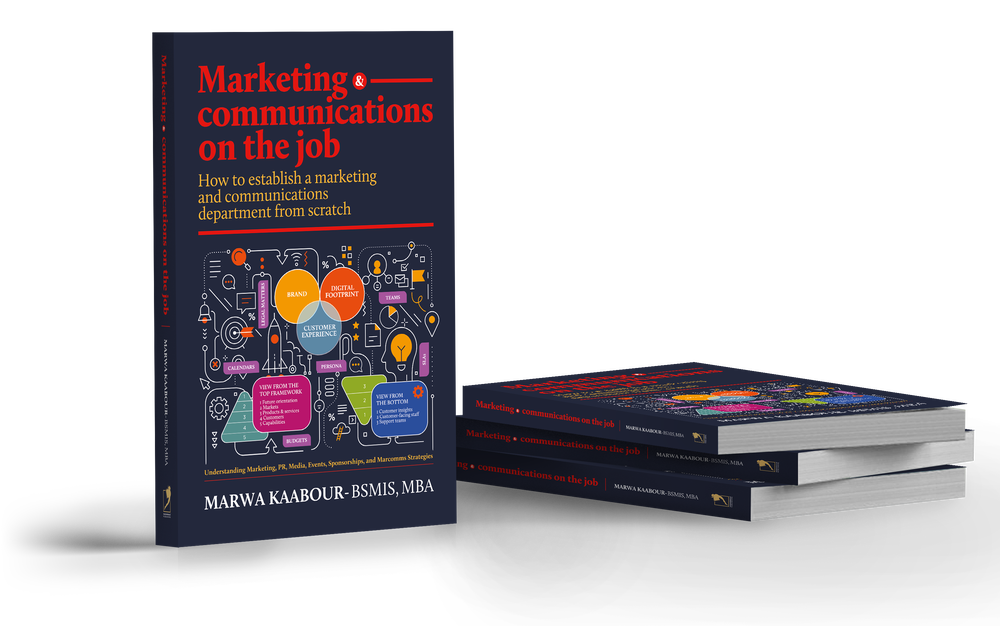You’re reading Entrepreneur Middle East, an international franchise of Entrepreneur Media.
In this rapidly changing world, where the lines between marketing and communications are blurring, and budgets are shrinking, but expectations are expanding, Marwa Kaabour, Head of Marketing and Communication at the Al Masaood Group, came to the realization that her peers in the sector she works in need to future-proof their skills.
That is why her newly published book, Marketing & Communications On The Job: How to Establish a Marketing and Communications Department from Scratch, offers practical tools to help marketing departments to establish and grow brands while ensuring the profitability of their teams. In a Q&A with Entrepreneur Middle East, Kaabour explained how her book can be a strategic guide for marketing professionals who want to make an impact. Excerpts from the conversation:
How is the role of marketing evolving?
In recent years, as a result of the pandemic and turbulent economic shifts, the role of marketing has changed, and many marketers have become change agents. Unlike in the past, when marketing was primarily concerned with expansion and publicity, it now plays a fundamental role in driving change. This includes redefining business propositions, addressing the shift to virtual economies and digital spaces, delivering meaningful business offerings, and addressing the acute business challenges. With technology, it is easier for marketers to reach consumers, but consumers are inundated with messages, making the quality of marketing messages more detrimental to their success than in the past.
How has technology changed marketing?
Marketing tools are available, and there are now systems and platforms that unify the presentation of data, such as the single customer view platformm or the increased transparency in revenue generation and the customer journey, allowing marketers to not only use personalization, but to also act quickly.
Automating data is expanding, and, if utilized properly, can result in the construction of structures. Additionally, technology is bringing operations, customer service, and marketing closer together than ever before, thereby expanding the marketing function. With technology, marketers are also able to focus more on retaining customers and extending their relationship with the brand than on merely acquiring new ones.
How has the ongoing economic crisis been affecting marketing?
The COVID-19 pandemic has introduced new consumption patterns and inflation, posing new challenges for marketers. While consumers attempt to save money, marketers are concentrating on customer retention and developing sustainable pricing practices. Here, we can also discuss marketing’s increasing emphasis on building culture and turning inward.
This shift towards building culture and turning inward is driven by the desire to create a strong brand identity and foster customer loyalty, which ultimately leads to increased revenue and profitability. Additionally, marketers are also focusing on incorporating social responsibility into their business practices to appeal to socially conscious consumers.

“Marketing & Communications On The Job: How to Establish a Marketing and Communications Department from Scratch” by Marwa Kaabour is available on Amazon.
Are consumers taking a stronger stance on climate change?
Despite the global economic crisis, consumers expect businesses to continue reducing their greenhouse gas emissions and to make meeting the United Nations’ goal of 1.5 degrees celsius above pre-industrial levels a top priority. Driving an environmental, social, and governance (ESG) agenda for a brand is one of the most recent additions to the responsibilities of chief marketing officers. This means that businesses need to prioritize sustainability and communicate their efforts effectively to consumers to maintain their trust and loyalty. Chief marketing officers play a crucial role in this by incorporating ESG factors into their brand strategies.
What do you personally think of the rise of ESG?
According to recent studies, more than 70% of marketers advocate for greater transparency in climate impact communication. Marketers are becoming more involved in product design, supply chain dynamics, and reevaluating pricing structures to address sustainable packaging and delivery, as well as promoting responsible consumption. This shift towards sustainability in marketing is driven by consumer demand for eco-friendly products and the need to mitigate the impact of climate change. As a result, companies are also investing in green technologies and implementing environmentally friendly practices to meet these demands.
In your opinion, what other shifts are taking place in the marcomms field?
Practitioners in this field are transitioning from a megaphone-based, noise-generation strategy to a highly targeted environment in which they speak the language of niche-specific target groups using a smart and personalized messaging strategy. Smart data analytic tools that can triangulate the customer’s mindset, the market’s status, and the overall sentiment and narrative are crucial for the creation of effective messaging houses. In their pursuit of growth in these difficult times and crowded markets, marketers are gravitating towards propositions that fundamentally alter the game.
What is your own philosophy in marcomms?
Simplify to amplify. As consumers’ attention spans are bombarded with so much information at once. There is an urgent need for the simplification of products, pricing, product consumption, and the overall customer journey. This simplification can lead to a better user experience, increased customer loyalty, and ultimately higher sales. It is important for businesses to prioritize the ease and convenience of their offerings to stand out in a crowded market.
Related: The Road To Equality: How Marketers Can Help Close The Gender Gap
This article is from Entrepreneur.com









